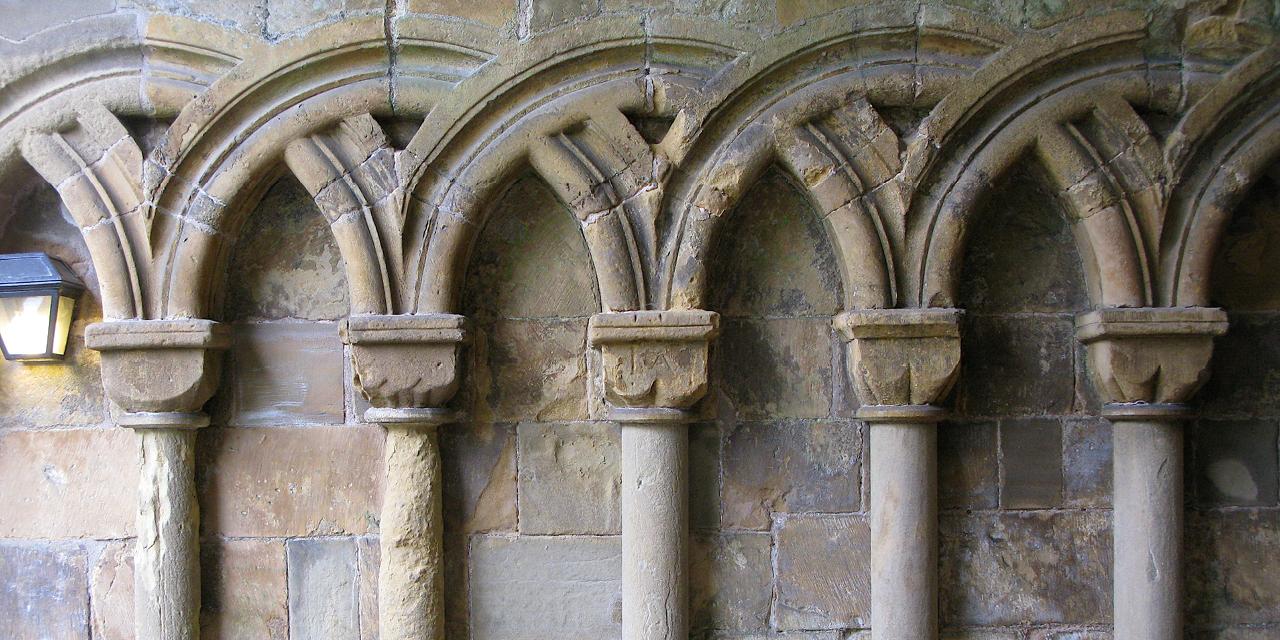Karin Maag is the director of the H. Henry Meeter Center for Calvin Studies at Calvin University, one of the world’s foremost collections of works about or by John Calvin. She edits Calvin Theological Journal and has taught postgraduate classes at Calvin Theological Seminary. Her many publications include Worshiping with the Reformers, Lifting Hearts to the Lord: Worship with John Calvin in Sixteenth-Century Geneva, and Does the Reformation Still Matter? In this edited conversation, Maag discusses prayer practices among Protestants during the Reformation era.
How did the Reformation era change practices of individual and corporate prayer?
In Protestant areas, corporate prayer largely moved from Latin to the vernacular. Certain prayers, such as the Ave Maria (Hail Mary) were no longer prayed, especially in Reformed/Calvinist areas. In some areas, such as in England, the entire liturgy was oriented around prayer—as in the English Reformation's Book of Common Prayer. The Lord's Prayer continued to be taught and prayed.
What did sixteenth-century churches use to teach people to pray at home?
Prayers at home were taught via catechisms, which often included model prayers to be used in various circumstances, such as before and after meals, before starting work or school, or before going to bed. Leading family prayers at home could give women a leading role in their households. Composing books of prayer was one of relatively few opportunities open to women authors in the sixteenth century.
How did the Reformers use and teach prayers of petition?
In terms of corporate worship, prayers of petition were included in the regular worship services, but also formed part of the special days of prayer that communities held in times of calamity or threat, such as during war, disease, or bad harvests. For those special days of prayer, congregations were meant to gather to petition God to hear their prayers amid their troubles. Often these prayer services were accompanied by fasting.
Almost every confessional group in the Reformation era produced prayer manuals for individuals and households, aiming to teach people how to pray. The Puritans in particular produced vast numbers of such works. They also provided accounts of model household leaders, who daily prayed individually and as a family, as an example for others to imitate. For instance, the Puritan William Hinde published a spiritual biography of his brother-in-law John Bruen in 1641, highlighting Bruen’s regular practice of arising at least an hour before the rest of his household to devote time to pray for each member of his household along with reading and meditating on scripture and sermons.
Was it only preachers who prayed during corporate worship?
In most instances, the preacher was the one to lead the congregation in prayer, but congregations joined in reciting the Lord's Prayer during the services as well. In traditions that followed a very liturgical practice (such as in the Church of England), the prayers recited by the preacher during the service became very familiar because they were repeated so often. People could and did memorize these prayers and could recite them along with the preacher in an undertone.
When you teach this material now, what surprises people?
I think one issue that surprises people is how deeply prayer practice is ingrained in people. At the Reformation in Geneva, the Genevan consistory tried to inculcate into the population the need to recite the Lord's Prayer in the vernacular.
But in the first years of the Consistory's work, in the 1540s, a number of older Genevans (often women) were brought before the Consistory and, when told to recite their prayers, said "Ave Maria . . . ". The Consistory told them, "No! Wrong prayer, wrong language!" But many of these older people then responded, "What do you mean ‘wrong prayer’? That's the prayer my mother taught me! How can it be the wrong prayer?"
What were the key debates or controversies about prayer in worship in the Reformation period?
One of the biggest was in England between the Church of England and the Puritans. It had to do with set prayer versus extemporaneous prayer. The Puritans supported extemporaneous prayer as being more faithful and faith-filled than reading a set text of a prayer. But when the Puritans gained power in England during the English Revolution and wanted to implement extemporaneous prayer in worship, they found it was a lot more difficult than they thought.
Some pastors liked the extemporaneous prayer idea in principle, but in practice felt more comfortable with a middle-ground option—coming into the pulpit with a prayer written out in advance, known as a conceived prayer. Those who objected to set prayer said it was cold and lifeless. Others who defended set prayer said it allowed for deeper meditation and focus rather than being distracted by the fumbling and rambling words of the person praying extemporaneously.
Anything else you want to say about praying during the Reformation era?
It's worth highlighting the close connection between prayer and psalm singing, especially the psalms of praise and lament. Even if congregations did not voice many spoken prayers beyond the Lord's Prayer, their active participation in psalm singing could also serve as a way to bring petitions, praises, and sorrows to God.
Learn More
Read Karin Maag’s article “Top Ten Lessons from Reformation Geneva” and her books Worshiping with the Reformers, Lifting Hearts to the Lord: Worship with John Calvin in Sixteenth-Century Geneva, and Does the Reformation Still Matter? More than three hundred years ago, Bible commentator Matthew Henry developed a method of prayer that still guides people today. Psalms for All Seasons: A Complete Psalter for Worship offers sung psalms for every psalm and worship element and also works well for family devotions.

